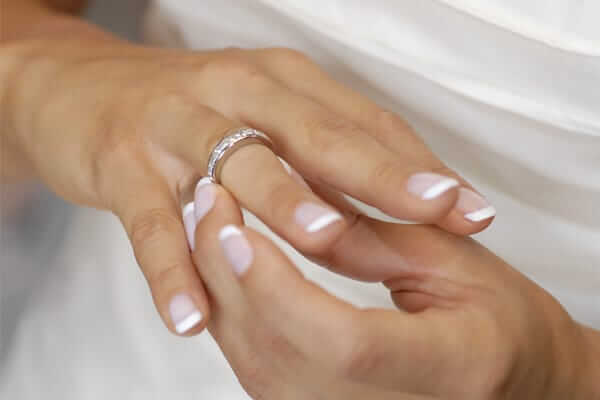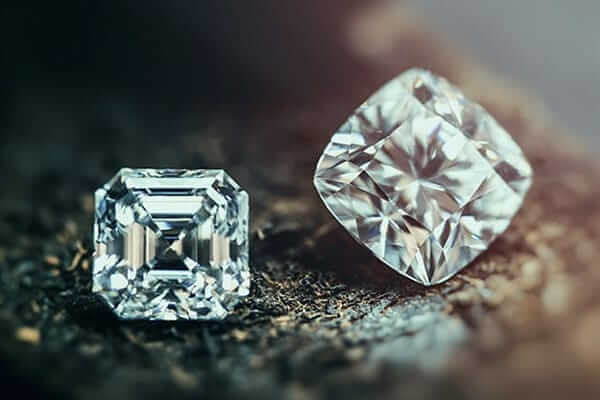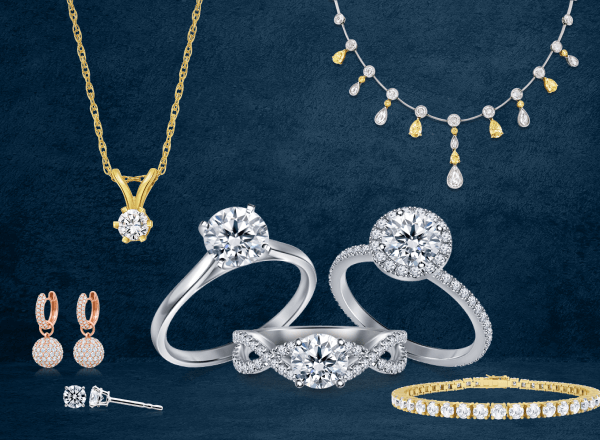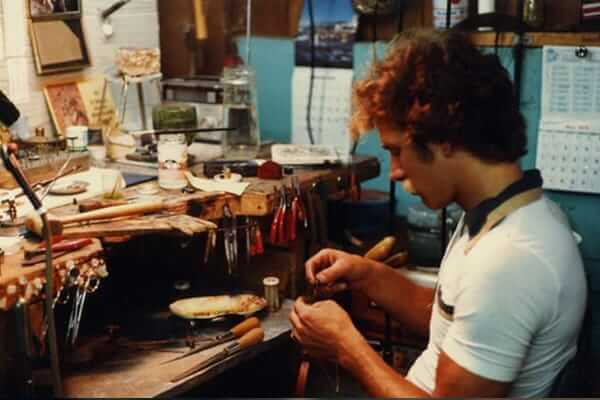Diamond Alternatives
Over the years various stones have been used in place of mined diamonds as a more cost friendly alternative. With the recent increase in accessibility to Lab-Created Diamonds more people are choosing lab created diamonds over traditional diamond alternatives. However, this choice comes down to style, preference, and budget. The last 2 options below stones that people use to simulate diamonds.
- Lab-Grown Diamonds
- Coloured Gemstones
- Sapphire
- Emerald
- Ruby
- Amethyst
- Zirconia
- Moissanite
What are Lab-Created Diamonds?

Lab-grown diamonds are created in a lab by scientists using advanced technology. However, they are chemically, physically, and optically identical to mined diamonds and have were declared equal to mined diamonds by the FTC in 2018. Lab-grown diamonds provide the same luxurious diamond at flexible price points to fit anyone’s lifestyle. They offer the opportunity of a larger carat weight at lower costs.
- Sapphire: Sapphire is a natural gemstone that comes in a variety of colours, including blue, pink, yellow, green, and purple. It is durable and scratch-resistant, making it an excellent alternative to a diamond.
- Emerald: Emerald is a natural gemstone that comes in a range of green hues. It has a unique look and is highly valued for its rarity and beauty.
- Ruby: Ruby is a natural gemstone that is known for its rich red colour. It is durable and has a high level of brilliance, making it a popular diamond alternative for engagement rings and other jewellery.
- Amethyst: Amethyst is a purple-coloured gemstone that is often used as a more affordable diamond alternative. It is readily available and can be used in a variety of jewellery designs.
Moissanite is a naturally occurring silicon carbide. The mineral moissanite was discovered by Henri Moissan while examining rock samples from a meteor crater located in Canyon Diablo, Arizona, in 1893. At first, he mistakenly identified the crystals as diamonds, but in 1904 he identified the crystals as silicon carbide.
The crystalline structure is similar to that of diamonds. This allows moissanite to withstand high pressures up to 52.1 gigapascals. Colours vary widely and are graded from D to K range on the diamond colour grading scale.
Cubic zirconia is a type of crystalline zirconium dioxide with a chemical formula of ZrO2. This synthetic material is typically colourless and hard, but it can be produced in a range of colours. It is important to note that cubic zirconia should not be confused with zircon.
Since its commercial production began in 1976, synthetic cubic zirconia was a significant competitor to diamonds due to its low cost, durability, and close visual resemblance to diamonds.
All of these diamond alternatives are durable enough for everyday wear and offer a variety of unique colours and styles for those who want something different than a traditional mined diamond engagement ring. Ultimately, the choice of gemstone depends on personal preference, budget, and the desired look of the engagement ring.
















































